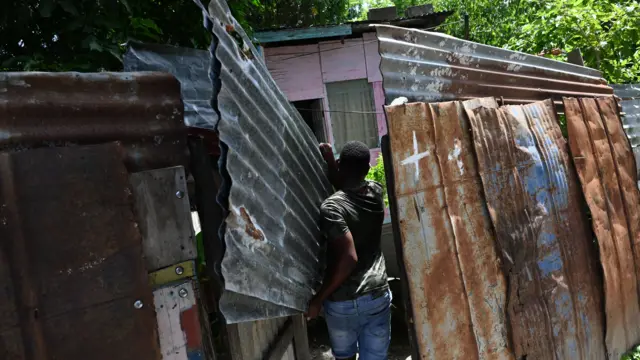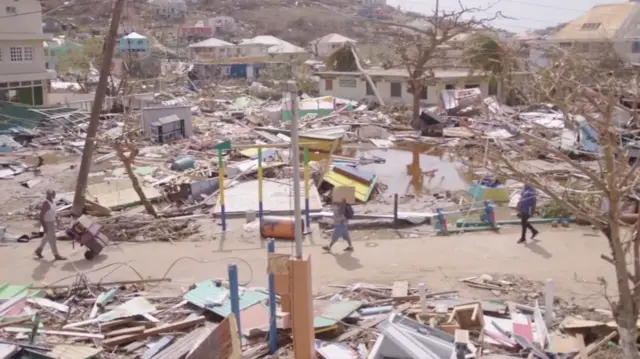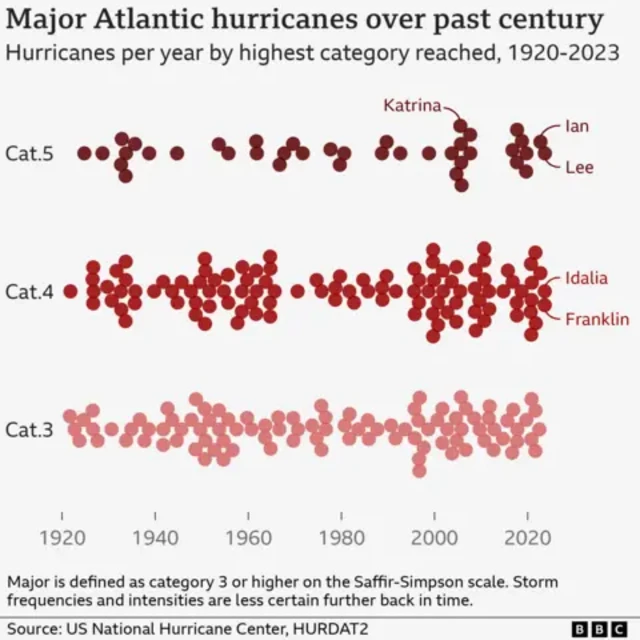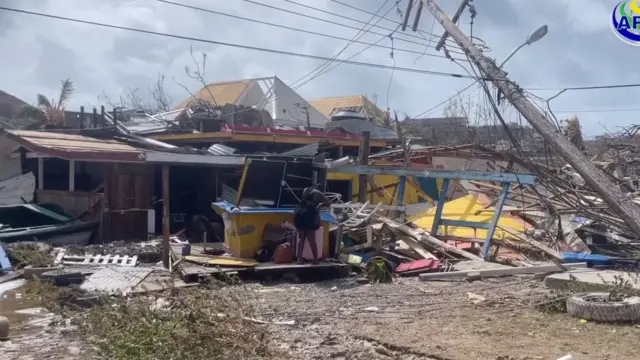'Potential for catastrophic damage' - National Hurricane Centrepublished at 10:52 BST 3 July 2024
 Image source, EPA
Image source, EPAPeople in Jamaica protect their homes ahead of the imminent arrival of Hurricane Beryl
The director of the US National Hurricane Center says Hurricane Beryl could have catastrophic consequences as it passes over Jamaica.
Dr Michael Brennan says "we could see the potential, obviously, of the core of a major hurricane moving across Jamaica with the potential for devastating to catastrophic wind damage."
He warned of "widespread damage" to homes, roofs, trees, power lines and infrastructure - and a possible storm surge of five to eight feet about normal tide levels along the coast of Jamaica.
Brennan adds that the capital Kingston, and elsewhere in the island's south coast, could see "potentially devastating wave action on top of that storm surge, creating a life-threating situation as well."



